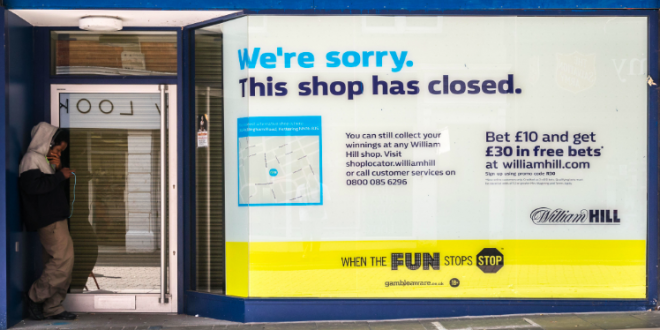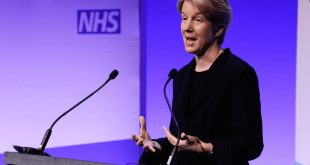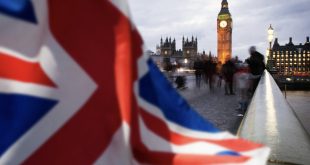Industry strategic consultancy Regulus Partners reviews a week of conflict and consequences for UK betting incumbents adjusting to new FOBTs and social responsibility realities.
_______________________
Last week saw optically conflicting news coming from the GB LBO sector as to the impact of the B2 ban (primarily) on likely shop closures. First, William Hill guided that around 700 shops (30% of the estate) were likely to close, with the 4,500 affected staff starting a consultation process and closures beginning before the end of the year.
Shortly after this announcement, GVC trimmed its estimated closures to 900 (26%) from 1,000. On the one hand, both are suggesting cuts in a relatively narrow ballpark of 25-30% and both have pulled back from previously bigger numbers. But there are more supposed differences than similarities, with GVC suggesting a much more resilient outcome. What might be going on and what does this mean for medium-term sector closures?
While there are some differences around the edges, the estates of WH and LCL are more similar than different, making a 5-ppt gap in overall estate guidance a big one to explain, in our view. We suspect the difference lies more in approach than underlying impact. LCL has guided to 900 shops in two years: while this will capture the majority of the direct impact, it still leaves some leases ongoing (given the likely distribution of renewals and break clauses) and question marks over underlying sustainability in a difficult topline and rising cost environment. We suspect the LCL approach is based upon a figure of which shops are obviously under-water with an easy exit strategy that will definitely be shut in the short-term. There is merit to this strategy in that by holding as much ground as possible, LCL is in the best position to benefit from redistribution from closing shops and grow market share. The risk is that LCL’s rump estate of c. 2,500 shops is still likely to have a ‘tail’ of 500-1000 shops of indifferent performance and prospects, at best, in our view. This tail could quickly become a problem in an environment of ongoing retail decline, rising costs and/or the need to spend capex across the estate.
William Hill initially guided to 900 shops ‘at risk’, though this always felt like an ‘extreme maximum’ pre any substitution or mitigation. That the 700 figure is so close to this has therefore shocked some optimists. First off, it is worth flagging that we believe the figure: while all is fair in accounting treatment, this is not an approach WH would take towards staff – the consultations are very real, very serious and very sad for all concerned. However, the 70% remaining estate will by default be made up of William Hill’s best performing and highest margin shops, likely with a relatively limited immediate tail. Consequently, while WH might be risking more in the short term with more rapid retrenchment, it is likely to be in a stronger position to withstand and adapt to more negative underlying trends ( assuming these don’t improve).
What we believe we are seeing, therefore, is the difference between an elastic and an inelastic defence. Both have merit according to circumstances, with LCL’s being a better move if retrenchment brings stability and WH’s being better if retrenchment requires further changes to adapt. Our instinct at this stage is that WH’s strategy is more closely aligned to what is likely to be the operational reality of the next 3-5 years (not just two). However, from a bigger picture perspective, this doesn’t really matter all that much: it might decide winners and losers within the GB LBO sector but it will have very little bearing on the overall shape of the sector, which is much more driven by macro pressures (unless and until someone opens a betting shop which isn’t identikit except for the colour and a bit of the B3 / SSBT content). In other words, if LCL does get way with closing only 900 shops overall, it will do so by forcing others to close or accept losses for longer (prolonging but not changing the outcome).
So far we have the 900 closures of LCL and the 700 of WH reflecting the latest post B2 guidance – although we are still only at the beginning of the impact curve (which does not necessarily improve from here). We can safely assume that Betfred shops are somewhat more brittle than LCL-WH, independents much more, while PPB still has no strategic reason to close any shops. This triangulates to c. 2,500 closures in the short/medium term. However given the lack of meaningful answers offered by the sector on R&D, different formats, or engaging the customer, combined with a cost-base almost designed to go up regardless of circumstance, we would still expect a 4-year closure figure of above 3,000.
Whether this is entirely down to the B2 ban (and so ‘the government’s fault’ or the fault of the senior lobbying / social responsibility management of the betting companies), or more due to the sector’s lack of credible responses and a wasted management decade (except for LTIPs very light on L and dividends) probably doesn’t matter all that much to the c. 18,000 people who will lose their jobs. But if the GB LBO sector as a whole wants a viable future after this, more of the same won’t cut it.
UK: in Parliament – division sounds as Five keep on movin…
This week’s instalment of Parliament’s long-running inquisition into the depravity of Britain’s gambling industry was sponsored – rather perversely – by the largest elements of Britain’s gambling industry. These are strange times indeed.
Tuesday’s announcement that the ‘Big Five’ (bet365, Flutter, GVC, Stars Group, William Hill) would – as had been widely trailed – increase funding for research, education and treatment (‘RET’) to £60m by 2023 prompted ministerial statements in both the House of Commons and the House of Lords. While the Government’s qualified praise for the move may provide some temporary balm for embattled executives, it was apparent that in seeking to address one issue, they may have exacerbated a number of others.
As we have written before, the commitment to dramatic increases in funding for treatment services is very good news indeed and the generosity of the licensees concerned should be recognised. Current provision of support for those experiencing gambling harm is likely to be inadequate. The problem is that we do not know just how inadequate it is because no-one has yet bothered to undertake a proper needs-based assessment. A range of bodies (including the Gambling Commission, the Advisory Board for Safer Gambling, the Labour Party and now the DCMS and the Big Five) have all managed to pluck figures out of the ether-based upon only the most rudimentary of calculations. Unsurprisingly, these organisations tend to differ in terms of how much is considered appropriate.
Analysis of current industry funding for harm prevention has also been highly selective – with most regulatory-political commentary focusing exclusively on funding to GambleAware (see our blog on the subject here: https://reguluspartners.com/index.php/2019/05/15/mo-money-mo-problems-the-debate-over-funding-for-harm-prevention/).
The problem with arriving at a solution without first running the necessary calculations is that it tends to smack of appeasement. This is a dangerous approach to take when dealing with politicians – who have a tendency to mistake the offer of an inch with the promise of a mile. No sooner had the Culture Secretary, Jeremy Wright (Cons, Kenilworth and Southam) applauded the Big Five pledge than he made it clear that he expected the rest of the industry to follow suit – or face action.
Rather unhelpfully, the nature of this “action” was not specified. A tax increase was hinted at but it is not clear that this would address the situation given that the Big Five would have to pay it as well. The industry as a whole already pays a modestly punitive level of duty by comparison with general retail – and none of this finds its way to harm prevention services. A tax increase that would result in RET funding would surely be a levy, which is precisely the mechanism that the Government seems keen to avoid.
This sadly appears to be typical of the regulatory establishment’s approach. Earlier this year, the Gambling Commission warned licensees that it expected funding of at least £70m for RET – but failed to advise operators where the money should go. The old National Responsible Gambling Strategy may have been flawed but at least it contained a budget required by GambleAware to fulfil its obligations. The Gambling Commission’s new Strategy to Reduce Harms contains no information about who needs to do what, at what cost and under what funding structure.
This is not an isolated example. The Department for Culture, Media and Sport has in the past taken a similar approach to advertising – voicing its disapproval of the nature and extent of the issue but refusing to take legislative action for fear of upsetting the media companies.
The most coherent voice in all of this belongs to the Labour Party Deputy Leader, Tom Watson (Lab, West Bromwich East). While his preferred outcome is a 1% statutory levy, he has at least recognised that a proper, scientific assessment of need ought to be the precursor to such a significant increase in funding.
It is not simply the nature of Mr Wright’s remedial action that is unclear; but also the point at which it would be triggered. Does he expect all licensees to contribute 1% of GGY to RET (and follow suit on the Big Five’s sweetener of data sharing) or would it be sufficient if 75%, 80% or 90% of operators fell in line? Moreover, if he is so keen to ensure that 1% of expenditure on gambling flows to RET, how will this be secured within the tender for the fourth licence to run the National Lottery (which would bring in around £29m at current levels but would also have a significant impact on valuation of the licence)?
It is now difficult to see this ending anywhere other than a statutory levy administered via the Department of Health (where it will at least in part bank-roll the aims of those ideologically opposed to gambling).
It is not surprising that a number of licensees outside the Big Five feel that they are being bounced into making a funding commitment designed to protect the interests of their competitors (by staving off regulatory action elsewhere). It was unfortunate that in the week that the new trade association, the Betting and Gaming Council set out an aspiration to represent the industry as “one voice”, the largest members decided to go so far off-piste.
The grand gesture may have bought some temporary respite from the Government (although Jeremy Wright pledged that it would “not protect the industry from tougher action”) but most of the MPs (Labour, Liberal Democrat, SNP, independent and Conservative) who spoke in Tuesday’s parliamentary debate appeared unimpressed. Instead of applauding the operators, they used the opportunity to pursue other matters – from a ban on credit cards to outright prohibition of online gambling.
Only Conor McGinn (Lab, St Helen’s North) was prepared to stand apart from the outraged mob, saying “millions of people like me enjoy a flutter on the gee-gees, a bet on the football and a visit to the casino or arcade without any difficulties, as an enjoyable pastime”.
Clive Lewis (Lab, Norwich South) did not participate in the debate but fired in a PQ later in the week to ask “what steps [the Government] is taking to prevent young people from becoming addicted to gambling?”. Meanwhile, in the House of Lords, the prelate known as the bookie-bashing Bishop of St Albans also seemed frustrated at the lack of clarity from the regulatory-political establishment on plans to reduce harm. He submitted questions on the quantum of funding (and its source) for the planned new NHS problem gambling clinics; as well as how the DCMS had arrived at the conclusion that its ‘Bet Regret’ advertising campaign was working. We have not always agreed with the bishop’s interpretation of data – but he has consistently asked highly pertinent questions on matters of gambling policy.
Elsewhere, Boris Johnson’s (Cons, Uxbridge and South Ruislip) call for a review of sin taxes offered some hope that a future Prime Minister might be prepared to stand up against the demands of the powerful public health lobby – even if he did not (wisely under current circumstances) include gambling duties within its scope. The mouth-foaming opposition to a proposal for a simple review (the outcome of which would presumably be determined by a weighing of scientific evidence) was also revealing about the ideological nature of many of those who seek to control the choices that their fellow adult citizens are permitted to make. These already formidable forces are likely to gain considerable strength from this week’s gambling pledge.
___________________










